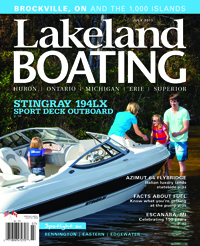

July 2013
Know Your Fuel... Or Else
A gas station near the boat launch on the North Branch of the Chicago River advertises 85 percent ethanol, or E85, gasoline. So… what would happen if a boater decided to fill up en route to the lake for an afternoon of sun and fun?
“The engine would burn up,” says Tom Marhevko, vice president of engineering standards for the Chicago-based National Marine Manufacturers Association.
Ethanol blended gasolines (E85, E15, E10, etc.) contain more oxygen and burn hotter than traditional gasoline, according to Jerry Nessenson, a fuel expert and president of ValvTect Petroleum Products in Northbrook, Illinois. Only engines that are manufactured to use more than 10 percent ethanol can use this type of fuel, Nessenson says, and no marine engines on the market today fit this category. (E15 and E85 should never be used in marine engines, period.)
Aside from fretting about the cost of gasoline, few boaters spend much time thinking about their gas tank. However, with some rudimentary knowledge about gasoline formulations and additives, owners can save a significant amount of money — and perhaps the life of their engine.
Also In This Issue…
- Spirit of the Sesquicentennial: The city of Escanaba, Michigan celebrates its 150th anniversary this summer
- Boat Test: Stingray 194LX Sport Deck Outboard
- Boat Test: Azimut 64 Flybridge
- Boat Spotlights: Bennington, Eastern & Edgewater
- Ask the Expert: Seakeeper’s Brook Stevens shares good news about the latest gyro-stabilization technology


